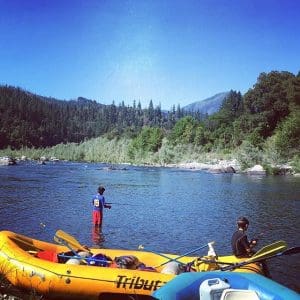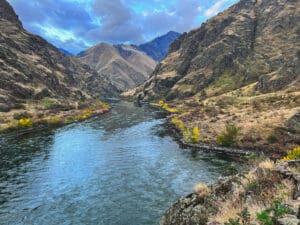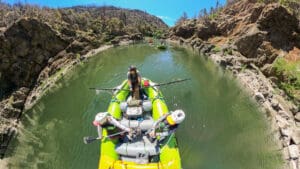Restoring Nature’s Balance: An Update on the Klamath Dam Removal Project
UPDATE: August 2023 – The Klamath River Restoration is underway! Copco 2 dam is now removed, and three more dams to go in 2024.
What does this mean for Tributary rafting trips on the Upper Klamath? The 2023 summer will be the last time you can raft the Upper Klamath section in the late summer and fall. With the dams’ removal, this section will only be running in the spring in future rafting seasons. We are running two Upper Klamath rafting trips in August – on Friday, August 25 and Sunday 27. This will be the last time you can raft the Upper Klamath this late in the season, don’t miss out! Click here for more information.
—–
Near the California-Oregon border, the Klamath Dam Removal project is fast-forwarding nature’s course, offering hope for the restoration of the native ecosystem. The century-old dams by PacifiCorp disrupted the salmon lifecycle and impacted Native American tribes’ cultural and spiritual connections. However, recent developments show promising results in this collaborative effort led by biologists and tribal members.
Over the span of 3.5 square miles, equivalent to 9 square kilometers, three reservoirs are being emptied, revealing soil exposed to sunlight for the first time in over a century. This crucial step is creating an opportunity for life to thrive once more in the area. Native American tribes have been actively involved in gathering seeds and sending them to nurseries, intending to sow them along the banks of the newly revitalized river. Helicopters have been employed to introduce hundreds of thousands of trees and shrubs, including wads of tree roots, to create a welcoming habitat for fish and other wildlife. Usually, such natural growth takes decades, but with the project’s proactive approach, the process is being accelerated. This intervention aims to outpace the invasion of foreign plants, such as star thistle, that have dominated the landscape, hindering the growth of native vegetation.
Tribal involvement in the restoration process has been a cornerstone of the project from its inception. Resource Environmental Solutions employed tribal members to meticulously gather seeds from native plants, highlighting the integral role of indigenous knowledge in ecological restoration. The Yurok Tribe went a step further by hiring a restoration botanist, showcasing their dedication to safeguarding their ancestral lands. Every plant species introduced serves a specific purpose in this intricate ecological puzzle. While fast-growing plants like lupine prepare the soil for other flora, oak trees play the vital role of providing much-needed shade to foster the growth of a diverse range of plants. This harmonious interplay among species promises a balanced and thriving ecosystem in the years to come.
Biologists predict that it will take at least a generation for the river to fully recover, yet within months of the dam removal, heartening signs of progress have been observed. Salmon, whose lifecycle was disrupted by the dams, are already recolonizing sections of the river that were inaccessible for more than a century. This rekindled hope has prompted the Lower Elwha Klallam Tribe to announce the opening of a limited subsistence fishery for coho salmon, marking their first opportunity to reconnect with their cultural heritage since the dams’ construction.
The Klamath Dam Removal project is a symbol of hope, showcasing the power of unity and collaboration in restoring nature and preserving cultural heritage. As we witness this transformative journey, we are reminded of the strength of collective action, inspiring us to become guardians of our planet for future generations.
This post is written as a follow-up to our first Klamath Dam Removal post here.
Resources: AP News





